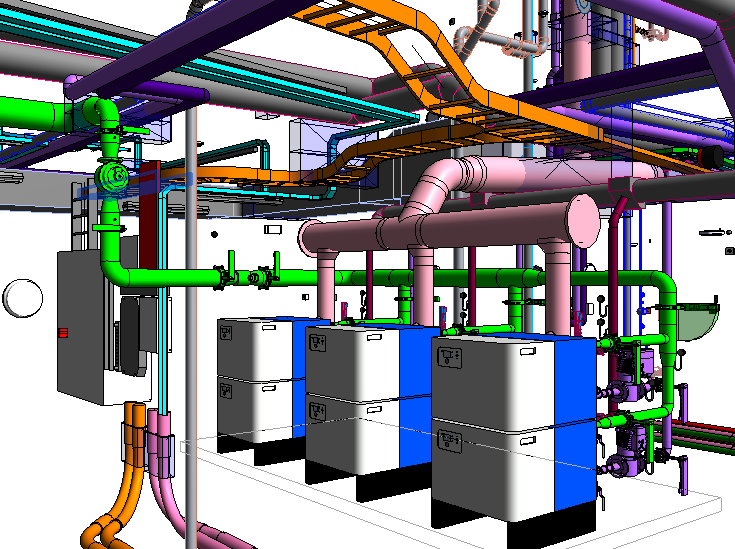BIM, Revit & CAD
What is BIM?
BIM stands for Building Information Modelling. It is a digital representation of the physical and functional characteristics of a building or infrastructure. BIM is a process that involves creating and managing information about a construction project throughout its entire life cycle, from initial design and construction to operation and maintenance.
BIM stands for Building Information Modeling. It is a digital representation of the physical and functional characteristics of a building or infrastructure. BIM is a process that involves creating and managing information about a construction project throughout its entire life cycle, from initial design and construction to operation and maintenance.
Key components of BIM include:
3D Modelling: BIM involves creating a three-dimensional digital model of the building or infrastructure, which includes not only its physical geometry but also additional information about its components.
Data Integration: BIM incorporates various types of data related to the project, such as spatial relationships, geographic information, quantities, and properties of building components. This data can include details about materials, costs, and maintenance requirements.
Collaboration: BIM encourages collaboration among different stakeholders in the construction process, including architects, engineers, contractors, and facility managers. By sharing a common digital model, teams can work more efficiently and reduce errors.
Lifecycle Management: BIM is not just about the design and construction phases; it extends to the entire lifecycle of the building or infrastructure. This includes operations, maintenance, renovations, and eventual demolition.
Analysis and Simulation: BIM allows for the analysis and simulation of various aspects of a project, such as energy efficiency, structural integrity, and clash detection (identifying and resolving conflicts between different building components).
BIM has become a standard practice in the architecture, engineering, and construction (AEC) industry, offering numerous benefits such as improved collaboration, reduced errors and rework, better decision-making, and enhanced facility management. The use of BIM can lead to more sustainable and cost-effective construction projects.

BIM at AWA
AWA has a designated team of experienced CAD and BIM drafting technicians, Our technicians possess not only advanced proficiency in CAD & Revit but also a profound understanding of building services, enabling them to offer pragmatic and viable solutions. The drawings are crafted adhering to our stringent standards and all British standards and regulations.
We believe in providing inspiring, sustainable, and efficient designs. To achieve this BIM has become central to our workflow and what we do. It provides wide ranging benefits to our clients, from seamless collaboration and co-ordination, through to greater control and accuracy of shares information.
At the start of each BIM project, we work together with the design team to establish the employer and design team requirements from the outset. To implement client standards, we ensure all project staff are aware of specific client requirements.
BIM and its various processes enable our engineers and designers to explore and make informed decisions earlier on in the design process. Our model-based projects are fully co-ordinated, helping to improve co-ordination and reduce errors, this helps us to deliver the project on time. As our knowledge and experience are gained from each project, we continually work on our BIM processes, developing, updating, and improving.
We create BIM models using the latest Autodesk Revit BIM software to collaborate with other consultants on the design of a building using COBie standards where BIM assists with reducing issues during construction.
MEP Modelling backed with true construction experience and expertise.
Complete BIM support for MEP services development and information management.
Fully coordinated and spatially accurate 3D MEP services models.
Conversion of design or mark-ups to electronic CAD drawings.
As Installed, As Fitted or As Built drawings from surveys or client markups.
